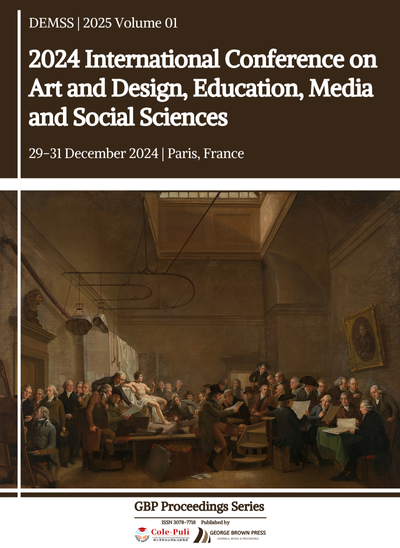An Exploration of Strategies in Social Interaction Intervention for Children with Autism under the Concept of Inclusive Education
DOI:
https://doi.org/10.71222/ek4qbz31Keywords:
inclusive education, children with autism, social interaction, intervention strategiesAbstract
The concept of inclusive education advocates the inclusion of all children, including those with special needs, in the mainstream education system so that they can enjoy equal learning opportunities. Children with autism have severe impairments in social interaction that affect their learning, life and psychological development. This paper discusses a number of inclusive education intervention strategies for children in peer groups that complement the concept of special education. These strategies include peer support, individualized interventions, environmental modifications, and home-school collaboration. This paper found that these intervention strategies were successful in impacting the social interaction skills of children with autism.
References
1. McConnell S. R. Interventions to facilitate social interaction for young children with autism: Review of available research and recommendations for educational intervention and future research. J. Autism Dev. Disord., 2002, 32: 351–372, doi: 10.1023/A:1020537805154.
2. Fortuny-Guasch R., Sanahuja-Gavaldà J. M., Pérez-Romero A. Strategies for the improvement of social skills in students with autism spectrum disorder: Intensive support for inclusive education. Specijalna edukacija i rehabilitacija, 2024, 23(4): 293–314, doi: 10.5937/specedreh23-47766.
3. Garfinkle A. N., Schwartz I. S. Peer imitation: Increasing social interactions in children with autism and other developmental disabilities in inclusive preschool classrooms. Top. Early Child. Spec. Educ., 2002, 22(1): 26–38, doi: 10.1177/027112140202200103.
4. MacKay T., Knott F., Dunlop A. W. Developing social interaction and understanding in individuals with autism spectrum disorder: A groupwork intervention. J. Intellect. Dev. Disabil., 2007, 32(4): 279–290, doi: 10.1080/13668250701689280.
5. Bauminger N. The facilitation of social-emotional understanding and social interaction in high-functioning children with au-tism: Intervention outcomes. J. Autism Dev. Disord., 2002, 32: 283–298, doi: 10.1023/a:1016378718278.
6. DiSalvo C. A., Oswald D. P. Peer-mediated interventions to increase the social interaction of children with autism: Considera-tion of peer expectancies. Focus Autism Other Dev. Disabil., 2002, 17(4): 198–207, doi: 10.1177/10883576020170040201.
7. Stone B. G., Mills K. A., Saggers B. Online multiplayer games for the social interactions of children with autism spectrum dis-order: A resource for inclusive education. Int. J. Incl. Educ., 2019, 23(2): 209–228, doi: 10.1080/13603116.2018.1426051.
8. Lamport M. A., Graves L., Ward A. Special needs students in inclusive classrooms: The impact of social interaction on educa-tional outcomes for learners with emotional and behavioral disabilities. Eur. J. Bus. Soc. Sci., 2012, 1(5): 54–69.










